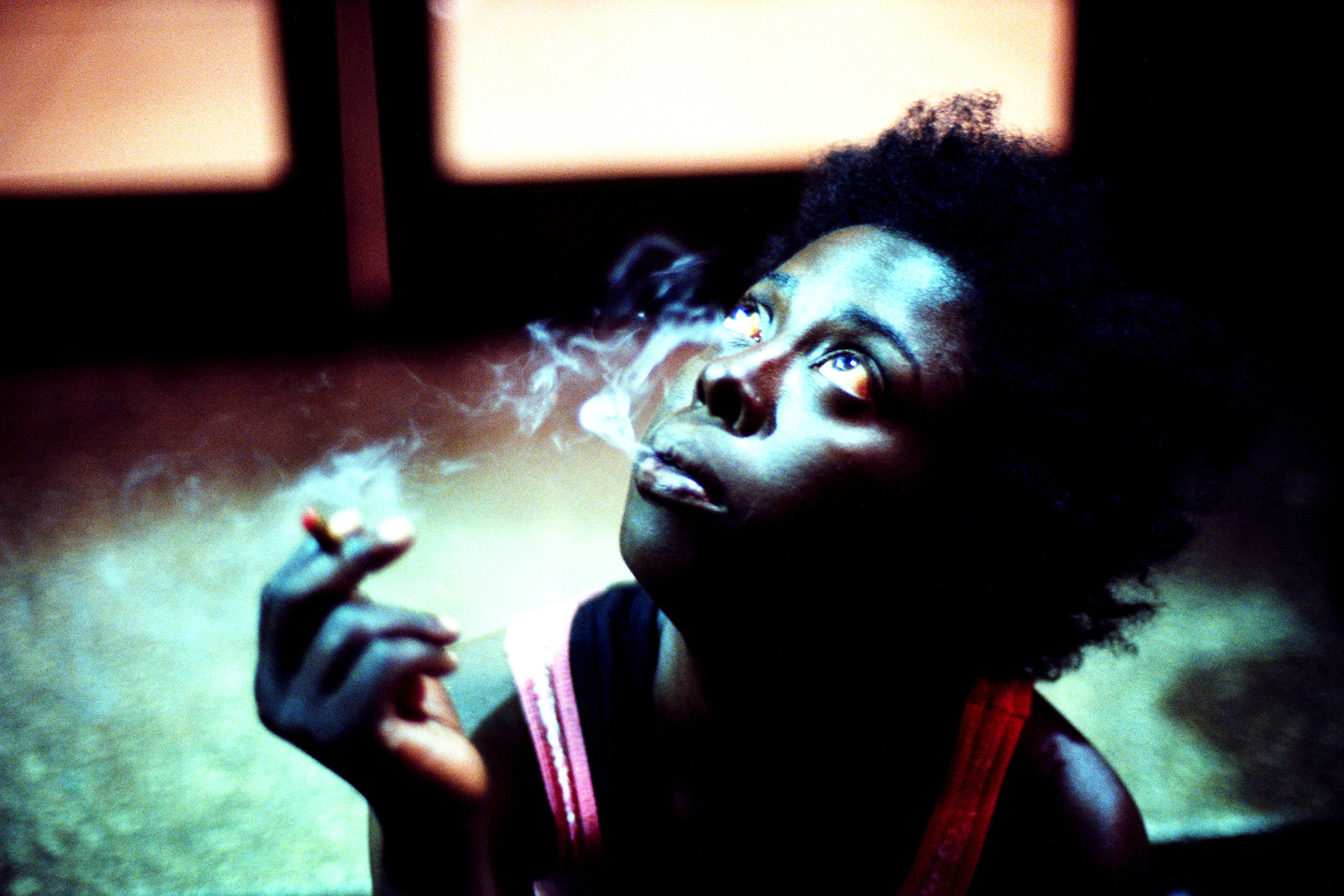presented in association with Canyon Cinema Foundation, Center for New Music, Oddball Film + Video and Shapeshifters Cinema
sponsored by LUNA, MUBI, Ninkasi Brewing and Vimeo
technical sponsor San Francisco Film Society
Full Festival Pass: [$70 general/$40 Cinematheque members] available here.
Admission: [$10 general/$5 Cinematheque members]. Advance tickets available here.
Join our Facebook event.
Khalik Allah’s Field Niggas is a luminous, ennobling, troubled and masterful meditation on night life on the streets of Harlem, NYC, 2014. Somnambulant, introspective and complexly wrought, Field Niggas engages with the great traditions of street photography and is presented in dialog with Agee, Levitt and Loeb’s silent 1948 masterpiece of Harlem street life In the Street. Also screening is Ephraim Asili’s Many Thousands Gone (2014), a vibrant trans-hemispheric vision of daytime city life, fusing scenes from Salvadore, Brazil and Harlem. (Steve Polta)
SCREENING:
In the Street (1948) by James Agee, Helen Levitt and Janice Loeb; screened as 16mm, b&w, silent, 16 minutes, print from the Museum of Modern Art Circulating Film Library
Introduction to In the Street by Tanya Sleiman, Director of 95 Lives: A Documentary Film about Helen Levitt.
Unpretentious, and beautifully photographed in 16mm black and white, this infectious film was a radical departure from its documentary predecessors, decades ahead of its time. As much a vibrant retelling of budding teenage romance as a quiet exploration of daily life in Harlem, In the Street is a tour de force, embracing real life dramas over staged re-enactments, carving an emotionally unforgettable and formally elegant tale that had Charlie Chaplin enthralled and convinced a young Ken Jacobs he could make films. A minor masterpiece of street life in Harlem, In the Street is a favorite that continues to excite filmmakers today (including the Safdie Brothers, Jem Cohen). (Tanya Sleiman)
Many Thousands Gone (2014) by Ephraim Asili; digital video, color, sound, 9 minutes, from the maker
Filmed on location in Salvador, Brazil (the last city in the Western Hemisphere to outlaw slavery) and Harlem, New York (an international stronghold of the African Diaspora), Many Thousands Gone draws parallels between a summer afternoon on the streets of the two cities. A silent version of the film was given to jazz multi-instrumentalist Joe McPhee to use an interpretive score. The final film is the combination of the images and McPhee’s real time “sight reading” of the score. (Ephraim Asili)
Field Niggas (2014) by Khalik Allah; digital video, color, sound, 60 minutes, from the maker
Part street noir, part anthropological nocturne, Field Niggas is an hour-long exploration into a legendary Harlem crossing: 125th Street and Lexington Avenue. Khalik Allah has lived and breathed these streets for some time—he joined the Five Percent Nation as a teen and traveled to Harlem often, where the organization is headquartered—and was familiar with the intersection and the people which sit at the center of his film. In it, the 30-year-old New Yorker turns his camera on a group of men and women, most of them destitute drug addicts but not all, that stalk its sidewalks under the blanket of a summer night. The images—radiant in their rawness and desperation—and audio are not in sync, and the effect gives the film a sort of trancelike feeling. A trip, literally and figuratively.
125th and Lex, as it is commonly referred to by longtime residents, is infamous for being a crime-riddled hub of vice where one can score all manner of illicit drugs. It is out of this dark elixir that Allah paints a new, more humane portrait: a people in search of mercy, just looking to survive. (Jason Parham: “The Pain and Beauty of Field Niggas: An Interview With Filmmaker Khalik Allah.” Gawker. October 20, 2015)
From its nonchalantly blunt title forward, Field Niggas, a new film shot, edited and directed by Khalik Allah, aims to smack viewers in the back of the head and snap them to attention. This hourlong feature, the filmmaker’s debut, depicts dozens of faces and bodies, black, white and brown, most of them gathered at the intersection of 125th Street and Lexington Avenue in East Harlem, during the summer of 2014. None of these faces and bodies belong to actors, but it won’t do to call this powerful film a documentary.
…Accompanying his images is an asynchronous soundtrack, in which the voices of the subjects hold forth on various topics. “I been around a lot of real people,” one says early on. The emergent theme is that in Harlem, life on the street is a form of prison or slavery. (In some cases, that prison is created by drug addiction; many shots show smoke pouring slowly out of various mouths, and much of the talk in the film is about the street drug K2, a synthetic marijuana.)
And while Mr. Allah mixes some field calls into the soundtrack to underscore this idea of bondage, his film is so beautifully constructed that nothing in it ever seems obvious. In his poetic way, and his eventual approach to the metaphysical, he makes his case. While the movie’s multiple images are never less than numinous, and its rhythms sometimes skirt the strangely seductive, this astonishing movie is the opposite of hypnotic. (Glenn Kenny: “Field Niggas Is a Meditation on Life on the Streets of East Harlem.” The New York Times. October 15, 2015)
Above still taken from Field Niggas by Khalik Allah
CROSSROADS 2016 receives generous support from: Grants for the Arts/San Francisco Hotel Tax Fund, Zellerbach Family Foundation, The Andy Warhol Foundation for the Visual Arts, The Willow Foundation and The Owsley Brown III Philanthropic Foundation.
